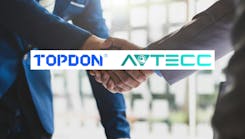This week, more than 120 attendees from leading US and Chinese clean truck and bus technology companies, together with representatives from key agencies of both governments, took part in the first US–China Clean Truck and Bus Summit here to help link US firms with Chinese partners and increase exports.
The Summit is a first of its kind event to link U.S. and Chinese companies specifically in clean fuels and technology for medium- and heavy-duty commercial vehicles, and is a key component of CALSTART's overall U.S.-China Clean Truck and Bus Technology Forum (www.chinacleantruck.org), supported in part by the U.S. Department of Commerce's International Trade Administration (ITA).
The Deputy Chief of Mission in the US Embassy in China, Robert Wang, provided opening remarks for the Summit. Wang cited a history of US-China cooperation, saying, "This forum is just the beginning. I hope each of you will be able to leave here with a better understanding of the economic and environmental benefits offered by new energy vehicles. I also hope that the American and Chinese attendees and sponsors will not only expand their own business opportunities, but continue contributing to the extended cooperation by our two nations as we roll out the future of clean technology together."
"Our objective is to bring top industry and government leaders together in a small, focused summit around trucks and buses, which has not received enough attention," said John Boesel, President and CEO of CALSTART. "Via the Summit we are raising the profile of US companies and their capabilities and introducing them directly to leading Chinese truck and bus companies looking for new technology. We seek a win-win for US and Chinese firms."
US industry Summit sponsors include technology leaders Dow Kokam (energy storage), Navistar (truck and engine), Eaton Corporation (hybrid, electric, transmission), BAE Systems (hybrid, power management) and Wells Fargo (clean tech investment), together with Chinese industry sponsor Weichai Power (engine, hybrid, power generation).
US and Chinese attendees come from major truck, bus and engine makers and component suppliers. The companies are jointly taking part in Summit briefing sessions on China's markets and technology interests, but also spending specific time in networking sessions to get a chance to meet and discuss.
Also unique to the Summit is the attendance by vehicle users from public transit agencies in five major Chinese urban centers. China has an aggressive national program to deploy "new energy vehicles", which to date have included a large number of hybrid, electric and natural gas buses. These users will provide important insight into the performance they desire from clean heavy-duty vehicles.
Government attendees as well come from an impressive cross-section of agencies, including the US Department of Commerce, US Department of State, US Environmental Protection Agency, China's Ministry of Science and Technology, Ministry of Environmental Protection, and Ministry of Industry and Information Technology.
"A key part of the Summit's success is due to our strong partners in China," noted Bill Van Amburg, CALSTART Senior Vice President and creator of the Forum. "The Innovation Center for Energy and Transportation (iCET) has been our primary organizing partner, with co-hosting partners China Automotive Energy Research Institute (CAERI) and CCNP, a heavy duty powertrain new energy alliance led by Weichai. Their expertise and contacts in China, coupled with our deep relationships in the US clean transportation industry, have made the first Summit extremely valuable for attendees, and lays the groundwork for future Summits and next steps."
An award from the Commerce Department's Market Development Cooperator Program (MDCP) partially supports the US-China Clean Truck and Bus Forum work. MDCP work is targeted at well-defined business plans aimed at increasing exports and US competitiveness within certain industries. These cooperative agreements help to further President Obama's National Export Initiative, which aims to double U.S. exports by the end of 2014 in support of several million US jobs.

